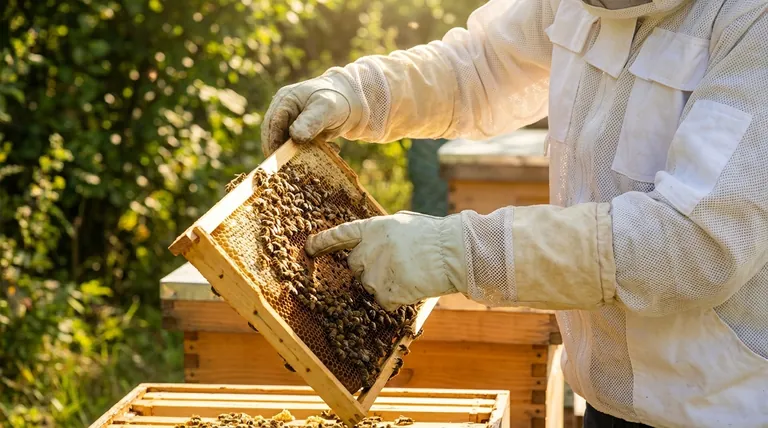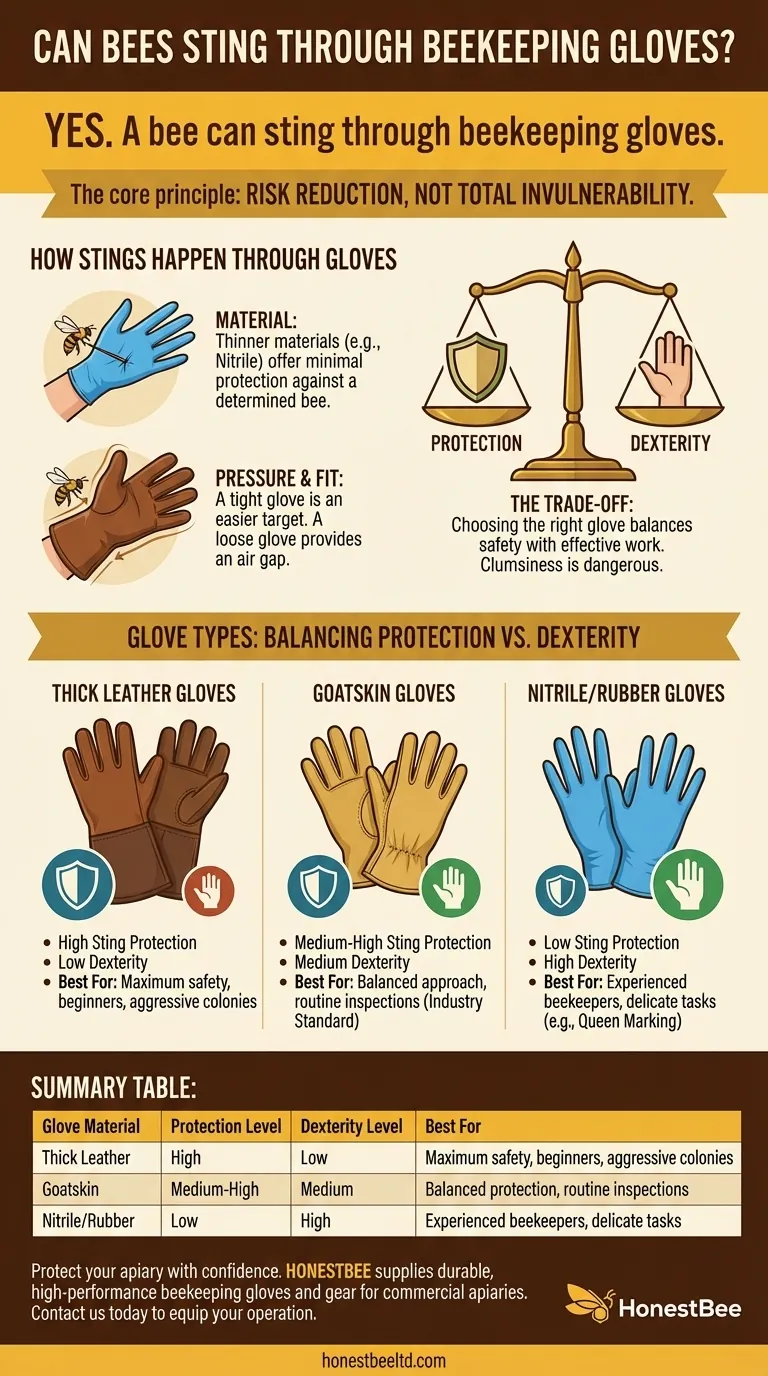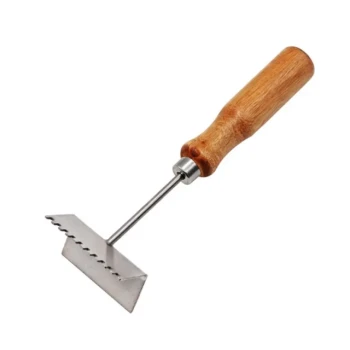Yes, a bee can sting through beekeeping gloves. While gloves provide a critical layer of protection, no material is 100% sting-proof. The effectiveness of your gloves depends heavily on their material, thickness, and how you work around the bees.
The core principle of beekeeping protection is risk reduction, not total invulnerability. Your gear, from gloves to veil, drastically lowers the chances of being stung, but your calm behavior and understanding the equipment's limitations are just as crucial for safety.

How Stings Can Happen Through Gloves
Material Makes the Difference
The most significant factor in a glove's protectiveness is its material. Gloves are a trade-off between sting resistance and the dexterity needed to handle frames and bees gently.
Thinner materials like nitrile offer excellent dexterity but provide minimal protection against a determined bee's stinger.
Thicker materials like leather or goatskin offer far superior puncture resistance. However, even these are not infallible.
The Role of Pressure and Fit
A bee can more easily penetrate a glove if its stinger is pressed against your hand. This often happens when a bee gets trapped between your gloved finger and a hive box or frame.
A loose-fitting glove provides a small air gap, making it harder for a stinger to reach your skin. A tight glove pulls the material taut against you, making it an easier target.
It's Not Just the Gloves
This principle applies to all beekeeping protective gear. A full bee suit and veil offer substantial protection, but a persistent, agitated bee can occasionally find a way to sting through the fabric or find a small gap at the wrist or ankle.
Understanding the Trade-offs: Protection vs. Dexterity
Choosing the right glove means balancing your need for safety with your ability to work effectively. Clumsiness can be as dangerous as insufficient protection.
Thick Leather Gloves
These cowhide or leather gloves offer the highest level of sting protection. Their thickness makes it very difficult for a stinger to penetrate.
The significant downside is a major loss of dexterity. Thick gloves can make you clumsy, increasing the risk of dropping a frame or accidentally crushing bees, which releases alarm pheromones and agitates the colony.
Goatskin Gloves
Goatskin is a popular middle ground. It's tougher and more sting-resistant than fabric but more supple and flexible than thick cowhide.
This allows for a good degree of protection while maintaining enough dexterity to perform most hive inspections confidently and gently.
Nitrile or Rubber Gloves
These gloves offer the least protection but the most dexterity. Some experienced beekeepers use them for delicate tasks like queen marking.
Using these is an explicit choice to trade safety for fine motor control, and it comes with a much higher risk of stings.
How to Apply This to Your Work
Your goal is to work safely and calmly, which requires both the right equipment and the right technique.
- If your primary focus is maximum safety: Choose thick leather or well-made goatskin gloves. This is especially important for beginners or when working with a known aggressive colony.
- If your primary focus is dexterity for a delicate task: An experienced beekeeper might opt for goatskin or even nitrile gloves, accepting the higher risk to avoid harming the bees or the queen.
- If your primary focus is a balanced approach: Vented goatskin gloves are the industry standard for a reason, offering a reliable compromise between protection and function for routine inspections.
Ultimately, your best protection is a combination of quality gear and calm, deliberate movements that keep your bees from feeling threatened in the first place.
Summary Table:
| Glove Material | Protection Level | Dexterity Level | Best For |
|---|---|---|---|
| Thick Leather | High | Low | Maximum safety, beginners, aggressive colonies |
| Goatskin | Medium-High | Medium | Balanced protection and dexterity, routine inspections |
| Nitrile/Rubber | Low | High | Experienced beekeepers, delicate tasks (e.g., queen marking) |
Protect your apiary with confidence. HONESTBEE supplies durable, high-performance beekeeping gloves and full protective gear designed for commercial apiaries and distributors. Whether you need thick leather for maximum safety or flexible goatskin for dexterity, our wholesale-focused operations ensure you get reliable equipment that balances protection and practicality. Contact us today to equip your beekeeping operation with gear that keeps you and your bees safe.
Visual Guide

Related Products
- Vented Beekeeping Jacket with Hood and Veil for Beekeepers
- 3 Layer Mesh Vented Sting Proof Beekeeping Suit with Hat and Veil
- Cotton Beekeeping Suit and Round Hat with Veil Bee Keeper Protective Gear
- Yellow Plastic Bucket Pail Perch for Beekeeping
- Heavy-Duty Stainless Steel Clip-On Frame Perch
People Also Ask
- What features should be considered for sting protection in a beekeeping suit? Ensure Total Safety and Comfort
- How does a ventilated suit balance sting protection and comfort? The Science of Cool, Safe Beekeeping
- What are the advantages of reinforced stitching and durable zippers in beekeeping suits? Ensure Maximum Safety & Longevity
- Why is a jacket with a hat veil recommended for beekeepers? Essential Protection for Your Face and Neck
- What are the benefits of a fully ventilated beekeeping suit? Stay Cool and Protected in Hot Climates



















